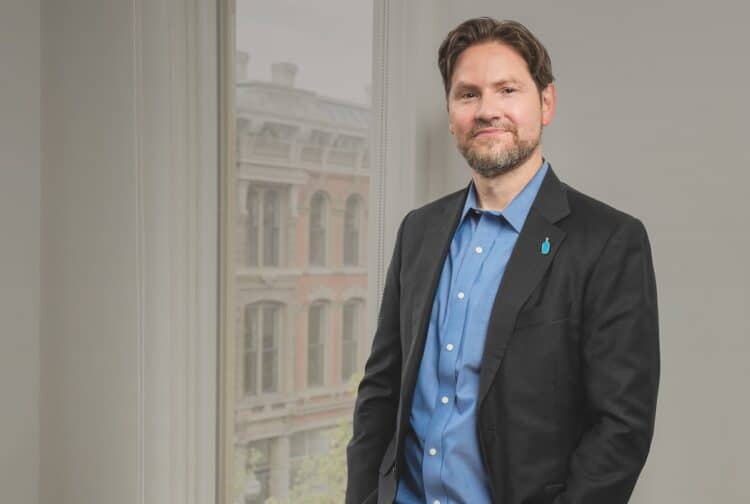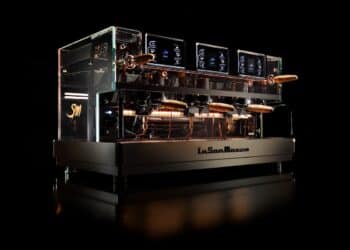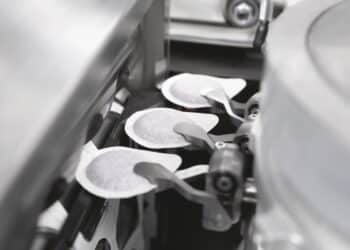Blue Bottle Coffee CEO Karl Strovink on staying true to the brand’s artisan roots while operating under one of the world’s largest companies.
Established in California in 2002 by professional musician James Freeman, Blue Bottle Coffee is a modern-day example of the American dream. What started as a farmers’ market stall selling small-batch, home-roasted beans has evolved into an international coffee company with a significant and growing global footprint.
As of August 2025, the brand has 140 cafés in six countries and roasts about 1800 tonnes of specialty coffee each year. It’s in a significant period of growth, not just expanding its café presence in its home market of the United States (US) and Asia but also its domestic product range, which now includes its Craft Instant Coffee lineup and collaborations with Nespresso.
For the past five years, CEO Karl Strovink has been guiding this evolution. With a background in consumer goods, when he made the move from footwear brand Converse to Blue Bottle he was green to the world of coffee beyond the knowledge of an average consumer.
“My parents were educators and coffee played a pretty prominent role in our household. I grew up in Berkeley, California, where there was a strong local café culture, and I remember inhaling that rich coffee aroma. However, like most young people, it took me a while to appreciate the taste,” Strovink tells Global Coffee Report.
“From a young age, I’d always been interested in brands and had a fascination in watching people shop and the emotions it elicited. Through my time working with Boston Consulting Group, I got the chance to see a wide plethora of brands in different categories, and then ended up in the footwear and sports apparel sector.
“But one day I looked in my closet, saw 150 pairs of shoes, and had an epiphany that the world doesn’t need more stuff. What it needs is more connection between human beings, experiences, and places – and coffee plays a signature role in that. I started meeting with the Blue Bottle team and realised there was this glorious chance to move back to the west coast and join a hometown brand that had not only achieved global success but also remained true to its roots.”
Into the world of coffee
Strovink joined the company – first as COO and President in 2019, then as CEO in 2020 – just two years after multinational food and drink conglomerate Nestlé acquired a 68 per cent stake for a reported US$425 million.
The deal came during a period of consolidation in the specialty coffee market and was part of a wider group of Nestlé acquisitions said to be driven by changing consumer attitudes towards big companies. As part of the acquisition, Blue Bottle Coffee would continue as an independent brand. The incoming CEO stepped up in what was a uniquely challenging time for the coffee sector.
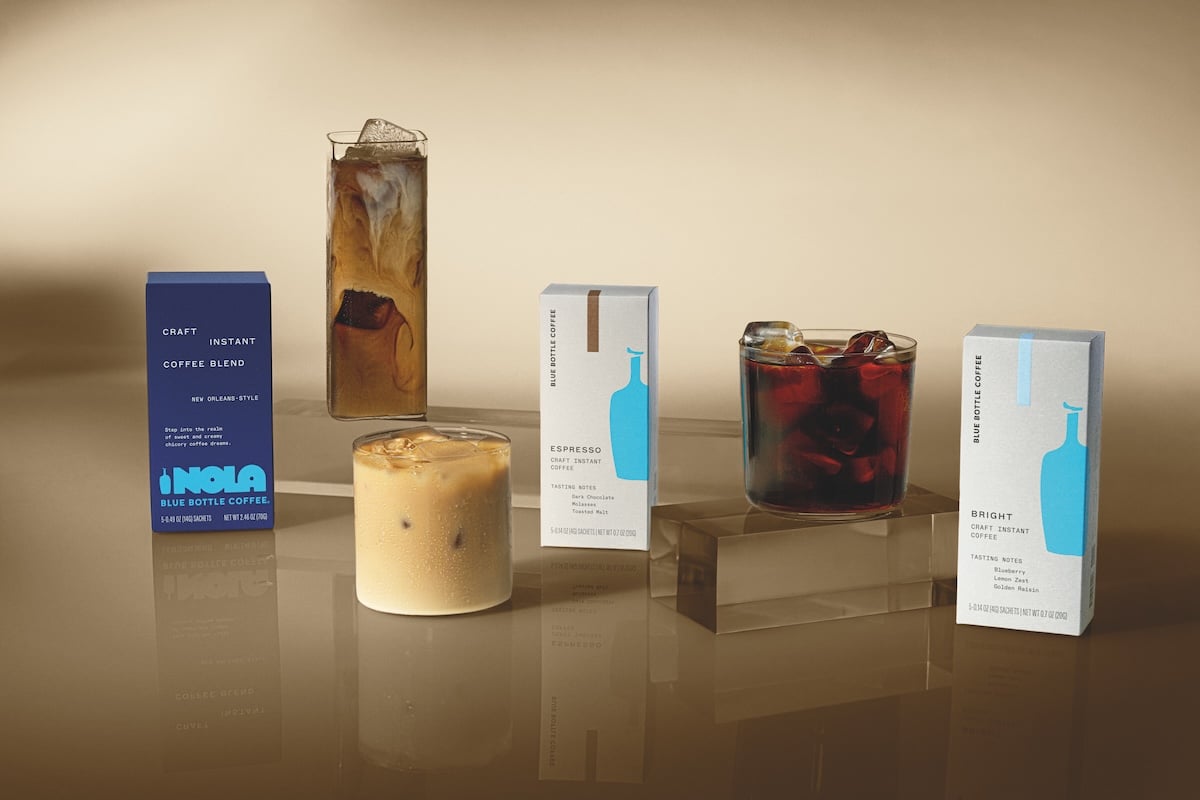
While his ambitions were to help steward Blue Bottle into a new era of growth, the universe had other plans.
“Within a week of being handed the baton, COVID-19 hit and I had to switch my goal to stewarding survival, which was not an easy feat as a café-dominant brand,” he says.
“Nestlé as a backer was extremely supportive and we focused on supporting our teams, temporarily shutting our cafés, and protecting our people. I stepped into an absolute mess, but we managed to not only recover but also come out stronger.”
East meets West
It wasn’t just the US’ lockdown restrictions the team had to navigate. In 2015, Blue Bottle opened its first international store in Tokyo, Japan, which was followed by stores in Seoul, South Korea, in 2019 and Hong Kong in 2020. Since then, it has also introduced venues in mainland China and Singapore.
This expansion into Asia was driven by Founder James Freeman who, since the early days of Blue Bottle, held a fascination with the ceremony-like tradition of Japanese coffee brewing. In the early 2000s, pourover coffee was almost unknown in the US.
“James’ interest in pourover – understanding the ritual of the process and its meditative qualities – began a love affair with Japan. Through this interest, Blue Bottle Coffee became one of the first major importers of Oji drip brewing equipment into the US,” Strovink says.
“From early on, there was an east-west connection within the brand and that ultimately led to our first international café in Tokyo. James had an emotional desire to bridge continents through coffee.”
As of August 2025, about a third of Blue Bottle’s venues are in Asia, with the region still a focus of its expansion plans. Over the past few years, Asia’s appetite for coffee has continued to grow at pace, with a keen interest in specialty.
Strovink says the brand is not only interested in the region’s consumer potential but also its emerging prominence as a producer of coffee.
“As part of our sustainability approach, we have a keen interest in new varietals, emerging origins, and regenerative farming. Many of these beans are coming out of regions that are also interested in enjoying the coffees they produce. In countries such as Vietnam and China, we already have a strong brand presence and that gives us an opportunity to build new relationships at producer level,” he says.
“Our intention is to champion what’s next at a varietal level and make sure diversity remains a concept of both species and taste profile. We’re not just interested in protection, but also innovation.”
The brand is experimenting with these new varietals and origins through its Blue Bottle Studio residencies, which are held for limited periods in select markets around the world.
The bespoke, sensory-based experience includes music and tasting rituals – a concept Strovink describes as “a megaphone for what’s next in coffee”.
As part of its origins as an independent specialty coffee roaster, Blue Bottle has long prioritised direct-trade sourcing and paying premium prices to reward quality and sustainability. Yet, as a company based in the US, it’s not immune to recent uncertainty resulting from President Donald Trump’s tariffs and the ongoing volatility of the coffee market.
“Everybody is facing the uncertainties that have been injected into the system. Because of our long-standing producer relationships, we have been able to continue to secure our supply and haven’t faced any major issues,” Strovink says.
“Over time, we are making adjustments to how we route our coffee to manoeuvre through any tariffs. For example, we are avoiding shipping to the US before distributing to our Asia markets. We’re trying to be smart in how we respond.”
Despite the recent interest in the coffee market due to factors such as tariffs and extreme weather events, Strovink says as a café-led brand coffee isn’t the most sensitive element of its economics.
“We’re continuing to invest in greater quality coffee with our partners, but more broadly costs are going up across the board. Our focus is on protecting the experience for our guests and ensuring our prices aren’t out of reach,” he says.
“We serve great taste and we want to ensure everyone has access to it. At the heart of it, what sets Blue Bottle apart is not just the coffee itself but the care and hospitality behind it.”
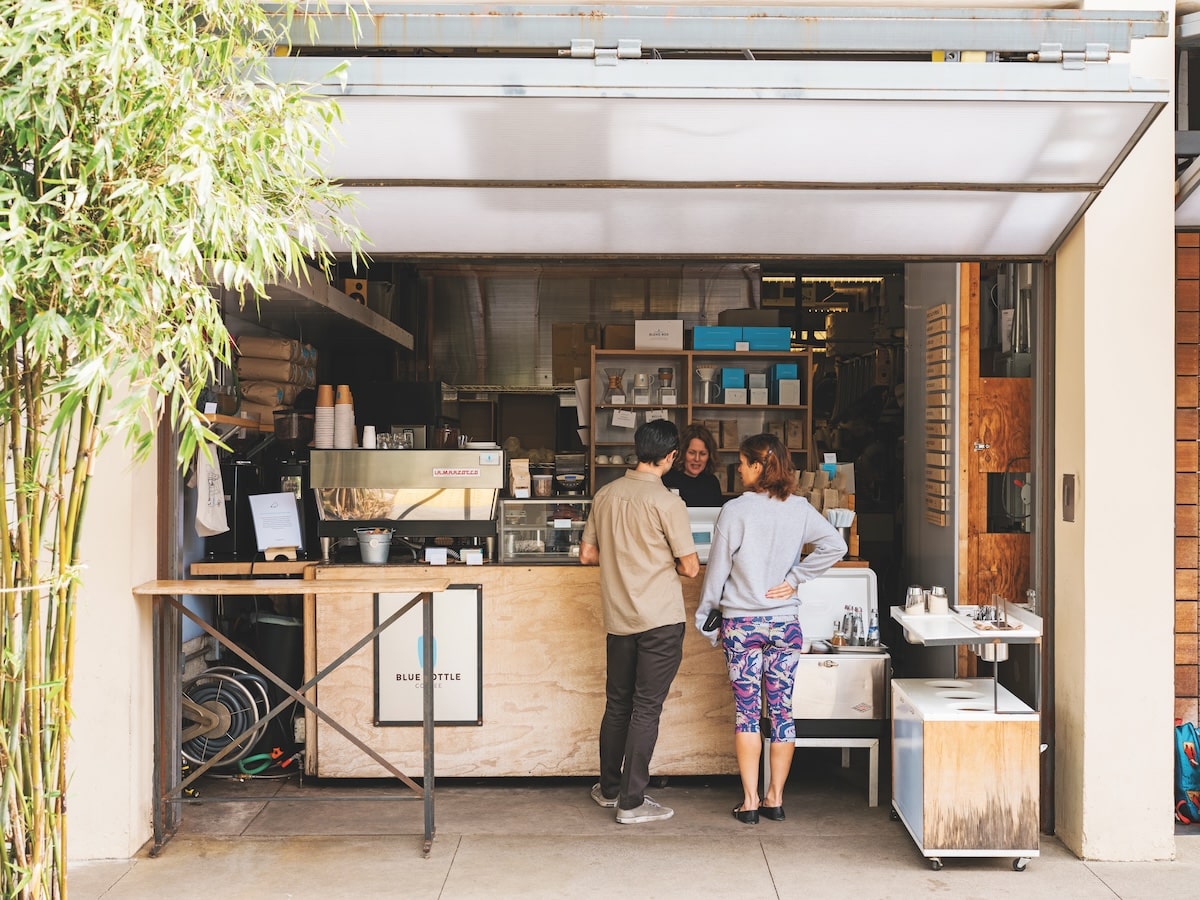
Innovation meets accessibility
As part of Blue Bottle’s drive to make its coffee accessible to more consumers, over the past few years the brand has released a series of new products for the at-home market. First came its Craft Instant Espresso in 2022, the brand’s first soluble espresso product made with specialty beans.
The product received high praise from both the specialty industry and the wider food and drink space, with Bon Appétit describing it as “comparable to coffee-shop espresso … aromatic and malty”. In mid-2024, in response to the rising popularity of chilled coffee, it introduced a soluble version of its customer-favourite New Orleans-style iced coffee, known as NOLA Craft Instant Coffee Blend.
“Make no mistake, our vision is to be the most distinctive and globally recognised café-led brand, so we’re not trying to splinter who we are. That said, we do want our guests to be able to extend their special coffee experiences beyond the café and so instant is a protagonist for that,” says Strovink.
“While we may be targeting the at-home market, there’s always a link back to the café. Take Craft Instant Espresso, for example: when we launched the product, we also launched a café that exclusively uses the instant coffee. If we’re going to sell it for you at home, we should put it to work in a café because that’s the ultimate endorsement of the quality.”
Most recently, the brand expanded its collaborations with Nespresso to launch a limited-edition capsule version of its NOLA blend.
“The idea to collaborate with Nespresso didn’t come from Nestlé – we had to convince them there was a brother-sister relationship and an opportunity there. It’s a good example of how we operate as an independent company. There is no pushing of brand, product, sourcing, or leadership from anybody within Nestlé – Blue Bottle is hermetically sealed top to bottom as a brand,” he says.
As part of its independence, Blue Bottle steers its projects in the innovation space, and Nestlé’s research and development (R&D) facilities and food-science experts have provided an additional resource to build on that work.
“It’s largely our most tenured Blue Bottlers who have been the most excited about linking with the Nestlé R&D team. For example, our Head of Innovation Benjamin Brewer has found himself among a passionate set of coffee peers with an ability to test hypotheses and explore new paths,” says Strovink.
“Nestlé has also been good at making sure Blue Bottle understands what depth of analysis actually looks like. They’ve made us better in terms of how we work our processes, all the good things that make us more secure in what we’re doing – sustainability is a great example.”
These new innovations are being rolled out in store as well as part of the range of at-home products, which will continue to cater to market trends such as domestic consumption and chilled coffee. Strovink sees that the home market continues to gain momentum, but argues there’s still plenty of room for growth in the café sector.
“The specialty coffee segment of the market is also growing significantly, so as a higher-end player we’re eating share from the middle market,” he says.
“I think part of the future is going to be breaking the tension between speed and quality, which very few, if any, coffee brands have been able to do. Ultimately, there are guests who want to savour in the café experience and then there are those who want their coffee at pace and don’t have time to wait in a long line.”
Strovink also believes the format of the traditional café will evolve in response to the rise of chilled coffee and customised beverages.
“Almost the whole setup of a café is tailored for the preparation of hot coffee. Chilled drinks are now much more dominant in the market compared to hot, yet the layout of the café hasn’t adapted to this. I think there’s going to be new innovation and we’ll see the café experience rotate around cold beverages,” he says.
So, where does Strovink see these cafés of the future for Blue Bottle Coffee? Asia will continue to be a key focus of the company’s growth plans, with possible breakouts in new regions also on the cards.
“We still have a tremendous runway in our existing markets. We recently launched in Singapore and in the whole Southeast Asia corridor there’s a lot of love for Blue Bottle. There’s more potential in that region, but we need to focus on expanding while maintaining our quality standards,” he says.
“The shifts we’re seeing in Europe and the Middle East are of interest and these are regions we haven’t traditionally pushed into, but for the moment our focus remains on our East meets West connection.
“The broader narrative is Blue Bottle is a growth brand. Since COVID, we’ve nearly tripled the business through growth with distinction. We’re trying to do something no other coffee brand has done. Our quality is getting better over time, which isn’t typically what happens in this category. Going forward, the challenge for us is how to keep that warm, welcoming spirit Blue Bottle is known for.”
This article was first published in the September/October 2025 edition of Global Coffee Report. Read more HERE.

